Soup is a comforting and versatile dish that can be enjoyed year-round. Whether it’s a hearty stew on a cold winter’s night or a light broth on a summer’s day, soup has the power to nourish and satisfy. However, achieving a rich and satisfying flavor can sometimes be challenging. This comprehensive guide will provide you with essential tips, techniques, and insights on how to make homemade soup more flavorful and memorable.
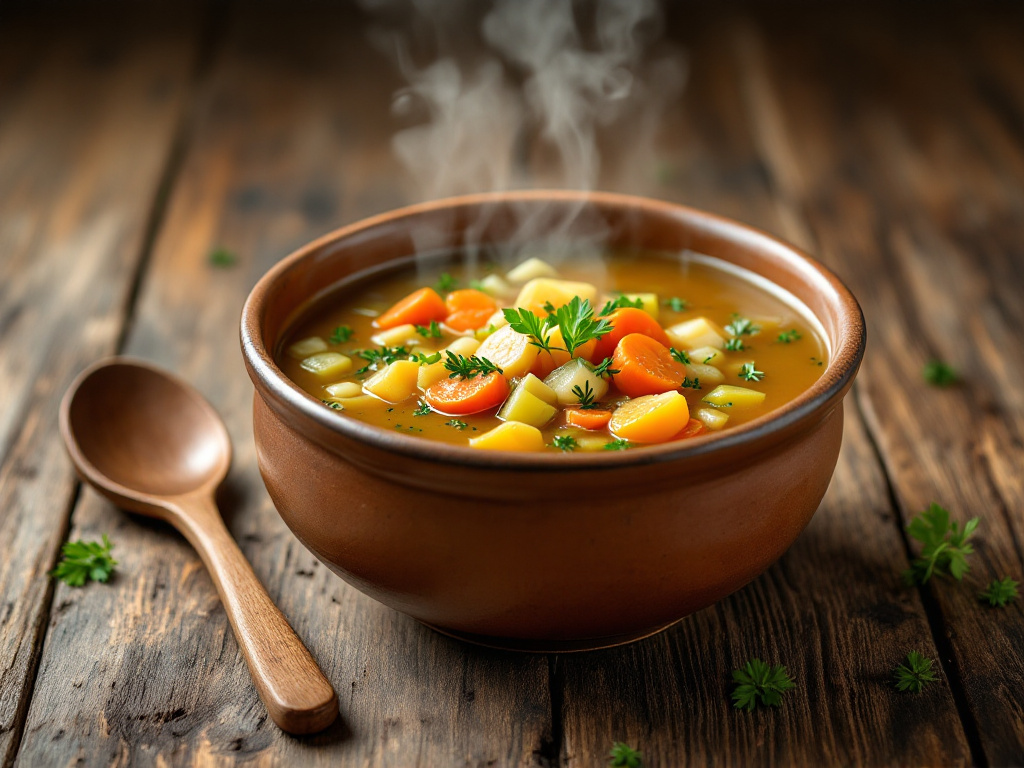
Start with a Strong Base
The foundation of any great soup lies in its base. Using homemade stock can significantly enhance the depth of flavor compared to store-bought options. Homemade stock allows you to customize the ingredients and tailor the taste to your preferences. By simmering bones, vegetables, and herbs, you can extract a rich and complex flavor profile that forms the backbone of your soup.
For more insights on creating a robust stock, check out our guide on boiling sausages in soup. This resource offers valuable tips on developing flavors and utilizing ingredients effectively, helping you understand how to make homemade soup more flavorful. Additionally, you can refer to Simply Recipes for expert advice on enhancing soup bases.
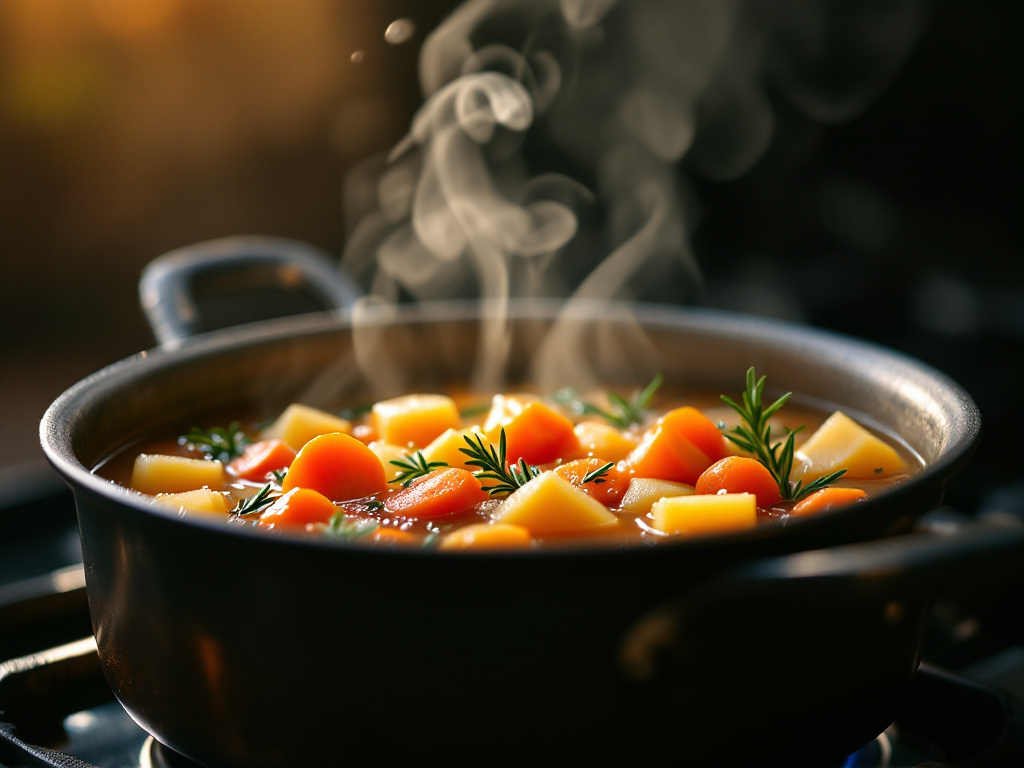
Aromatics such as onions, garlic, and celery play a crucial role in building the base of your soup. Sweating or browning these ingredients can release their natural sugars and intensify their flavors. This process creates a complex and savory backbone for your soup.
-
Choose the Right Aromatics: Select aromatics that complement the other ingredients in your soup. For example, a classic mirepoix of onions, carrots, and celery is versatile and works well with many soup recipes.
-
Experiment with Different Fats: Using different types of fat, such as butter, olive oil, or bacon fat, can add unique flavors to your soup base. Choose a fat that complements the other ingredients in your recipe.
-
Add Herbs and Spices Early: Incorporating herbs and spices early in the cooking process allows their flavors to infuse the soup base. This technique can add depth and complexity to your soup, making it more flavorful.
Techniques for Building Flavor
Building flavor in your soup involves a combination of techniques that enhance the natural tastes of the ingredients. By understanding and applying these methods, you can create a soup that is rich, complex, and satisfying. Mastering how to make homemade soup more flavorful involves experimenting with these techniques.
Roasting Vegetables
Before adding vegetables to your soup, consider roasting them. This technique concentrates their flavors and adds a layer of complexity. Roasting caramelizes the natural sugars in vegetables, creating a sweet and savory profile that enhances the overall taste of the soup.
-
Best Vegetables for Roasting: Carrots, bell peppers, squash, and root vegetables like potatoes and parsnips benefit significantly from roasting. Their natural sugars caramelize, adding depth and sweetness to the soup.
-
Roasting Tips: Toss the vegetables in a small amount of oil, salt, and pepper before roasting. Spread them evenly on a baking sheet and roast at a high temperature, around 400°F (200°C), until they are tender and golden brown.
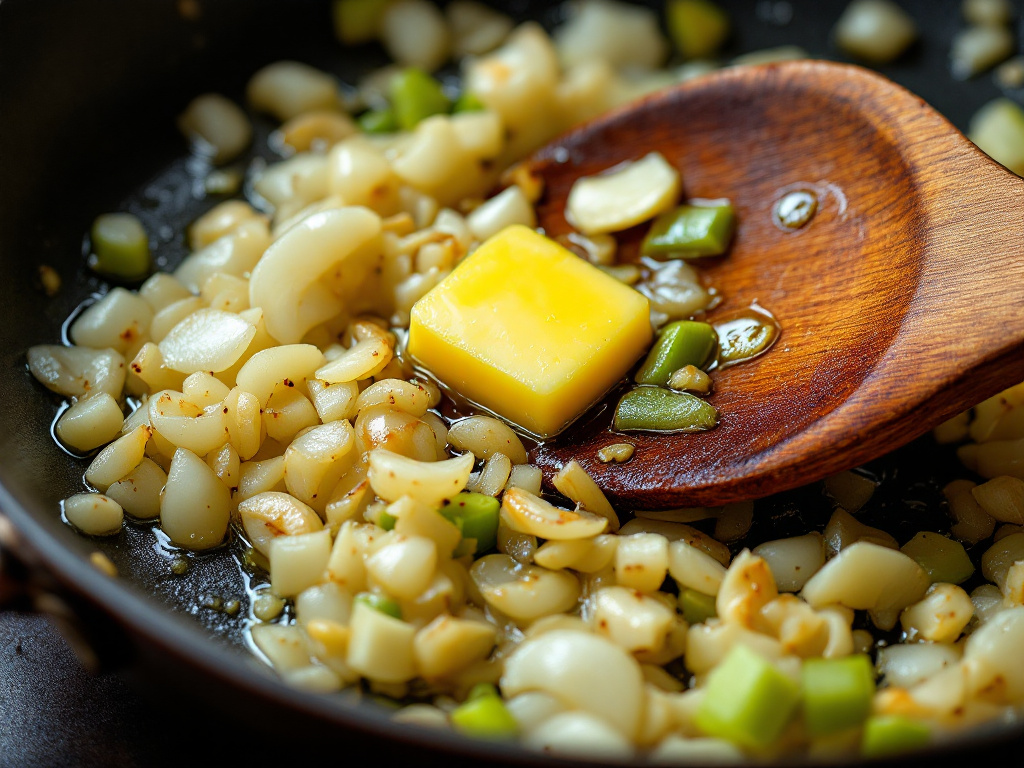
Searing Meats
To develop a rich, savory flavor, sear meats before adding them to the soup. This method is particularly effective for chicken, beef, and sausage, as it creates a caramelized surface that enhances the overall taste. Searing locks in the juices and develops a complex flavor profile that permeates the soup.
-
Searing Techniques: Pat the meat dry with a paper towel to ensure a good sear. Heat a small amount of oil in a pan over medium-high heat and add the meat. Cook until a golden-brown crust forms, then flip and repeat on the other side.
-
Deglazing the Pan: After searing, deglaze the pan with a liquid like wine, stock, or water to scrape up any browned bits. These bits, known as fond, are packed with flavor and can add depth to your soup.

Simmering and Reducing
Allowing your soup to simmer and reduce can intensify its flavors. This process concentrates the ingredients and allows them to meld together, resulting in a more robust and cohesive dish. Simmering breaks down the ingredients, releasing their flavors and allowing them to combine in a harmonious way.
-
Simmering Tips: Simmer the soup over low heat, partially covered, to allow the flavors to develop without reducing the liquid too quickly. Stir occasionally to prevent sticking and ensure even cooking.
-
Reducing Liquids: To reduce the liquid in your soup, simmer it uncovered over medium heat. This process evaporates the water, concentrating the flavors and creating a richer, more intense taste.
Seasoning and Spices
Seasoning your soup at different stages of cooking can greatly impact its final taste. Adding salt and spices early in the cooking process allows the flavors to blend and develop over time. However, it’s also essential to taste and adjust the seasoning as you go.
Herbs and Spices
Incorporating a variety of herbs and spices can elevate your soup’s flavor profile. Fresh herbs like parsley, thyme, and basil can be added towards the end of cooking to preserve their delicate flavors. Dried spices, on the other hand, can be added earlier to allow their flavors to infuse the soup.
-
Using Fresh Herbs: Add fresh herbs towards the end of cooking to preserve their vibrant flavors and colors. Chop them finely and stir them into the soup just before serving.
-
Dried Spices: Toast dried spices in a dry pan over medium heat before adding them to the soup. This process releases their essential oils and enhances their flavors.
Balancing Flavors
Achieving a balanced flavor profile is crucial for a satisfying soup. Consider the interplay between different taste sensations, such as sweet, salty, sour, and bitter. Adjust the seasoning as needed to create a harmonious blend of flavors.
-
Sweetness: Add a touch of sweetness with ingredients like carrots, sweet potatoes, or a pinch of sugar. This can help balance out acidic or bitter flavors in the soup.
-
Acidity: Incorporate acidic ingredients like vinegar, lemon juice, or tomatoes to brighten the flavors and add depth. Acidity can also help cut through rich or fatty ingredients.
-
Heat: Spicy ingredients like chili peppers, red pepper flakes, or hot sauce can add warmth and complexity to your soup. Start with a small amount and adjust to taste.
Adding Depth with Umami
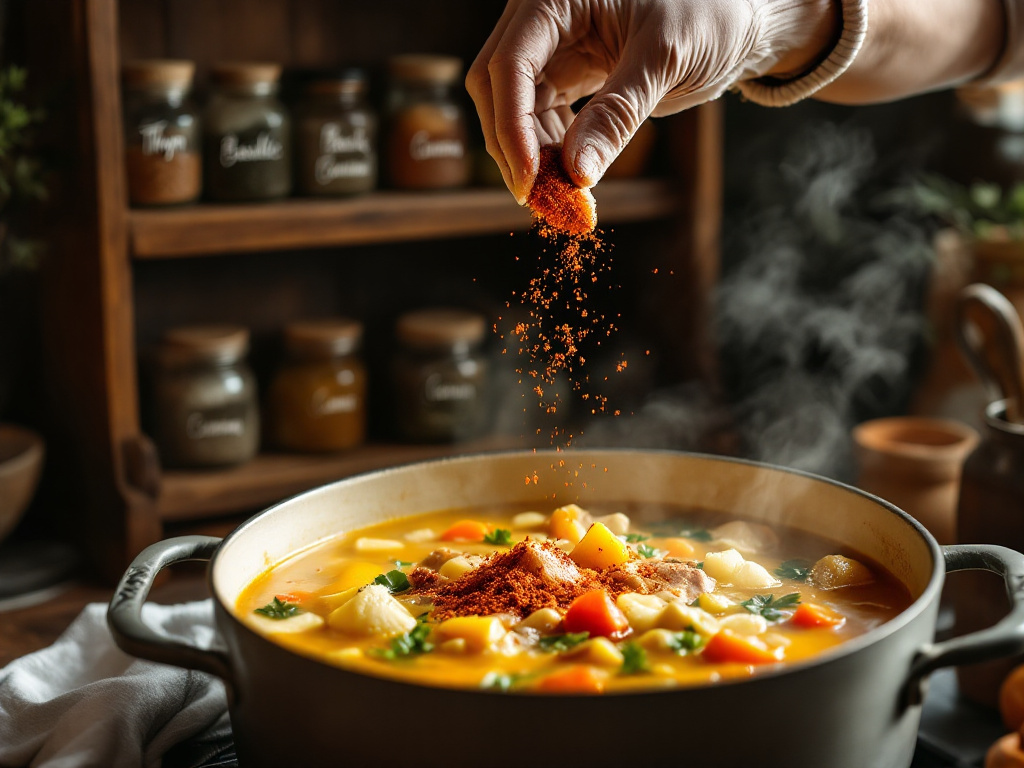
Umami is the fifth basic taste and can add depth and richness to your soup. Ingredients like soy sauce, mushrooms, and tomato paste are high in umami and can enhance the overall flavor. For more ideas on incorporating umami into your soups, explore our guide on making better soups and refer to Bon Appétit’s tips for expert advice. This will further your knowledge on how to make homemade soup more flavorful.
Umami-Rich Ingredients
-
Soy Sauce: A versatile ingredient that adds a savory, umami-rich flavor to soups. Choose a high-quality soy sauce for the best results.
-
Mushrooms: Dried or fresh mushrooms, such as shiitake or porcini, can add a deep, earthy flavor to your soup. Rehydrate dried mushrooms in hot water before adding them to the soup.
-
Tomato Paste: Concentrated tomato paste adds a rich, umami-packed flavor to soups. Stir it into the soup base and allow it to cook for a few minutes to develop its flavors.
Fermented Foods
Adding fermented foods like miso or kimchi can introduce complex umami flavors to your soup. These ingredients not only enhance the taste but also provide health benefits due to their probiotic content.
-
Miso: Dissolve miso paste in a small amount of hot water before adding it to the soup. This technique ensures that the miso is evenly distributed and its flavors are fully incorporated.
-
Kimchi: Stir in a spoonful of kimchi for a tangy, spicy kick. Adjust the amount to suit your taste preferences.
Texture and Consistency
The texture of your soup can greatly impact its enjoyment. Using thickening agents like pureed vegetables or starches can help achieve the desired consistency without compromising flavor.
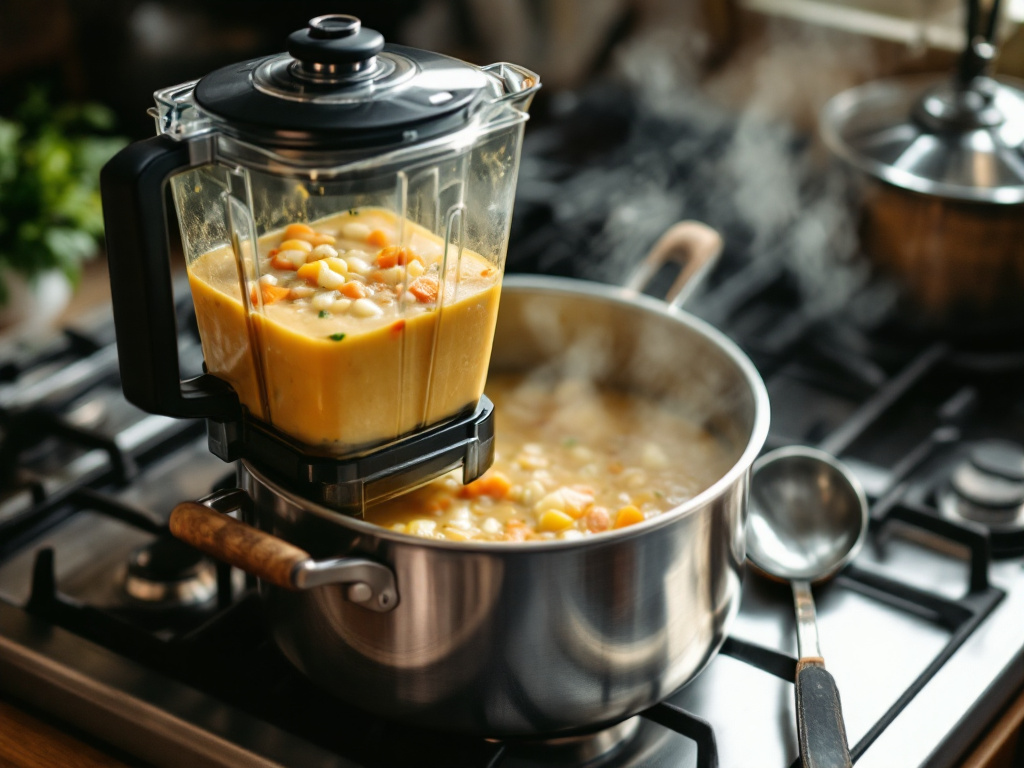
Creamy Textures
To create a creamy texture without relying on heavy cream, consider blending vegetables like cauliflower or potatoes. This technique adds richness and body to the soup while keeping it light and healthy.
-
Blending Techniques: Use an immersion blender or a traditional blender to puree the vegetables until smooth. Add a small amount of liquid to facilitate blending if needed.
-
Alternatives to Cream: For a dairy-free creamy texture, try using coconut milk, cashew cream, or silken tofu. These ingredients add richness and body to the soup without the need for heavy cream.
Thickening Agents
-
Starches: Cornstarch, arrowroot, or tapioca starch can be used to thicken soups. Mix the starch with a small amount of cold water before adding it to the soup to prevent lumps from forming.
-
Roux: A classic thickening agent made from equal parts fat and flour. Cook the roux over medium heat until it reaches the desired color, then whisk it into the soup to thicken.
Finishing Touches
Adding a final touch of acidity with vinegar or citrus can brighten the flavors and balance the soup. This technique is particularly useful if your soup tastes flat or needs a little extra zing.
Garnishes and Toppings
Finishing your soup with garnishes and toppings can enhance both its flavor and presentation. Fresh herbs, croutons, or flavored oils can add a pop of color and a burst of flavor.
-
Fresh Herbs: Chop fresh herbs finely and sprinkle them over the soup just before serving. This adds a vibrant, fresh flavor and a pop of color.
-
Croutons: Toast bread cubes in the oven with a drizzle of olive oil and a sprinkle of salt for a crispy, flavorful topping.
-
Flavored Oils: Drizzle infused oils, such as chili oil or herb oil, over the soup for an extra layer of flavor.
Advanced Flavor Techniques
For those looking to take their soup game to the next level, consider experimenting with infused oils and smoking techniques.
Infused Oils
Creating infused oils with herbs, spices, or aromatics can add an extra layer of flavor to your soup. Drizzle the oil over the soup just before serving to maximize its impact.
-
Herb-Infused Oil: Heat olive oil gently with fresh herbs like rosemary, thyme, or basil. Allow the oil to infuse for a few minutes, then strain out the herbs and drizzle the oil over the soup.
-
Chili Oil: Infuse olive oil with dried chili flakes and a pinch of red pepper flakes for a spicy kick. Drizzle the oil over the soup for a warm, flavorful finish.
Smoking and Charring
Adding smoky flavors to your soup can be achieved by charring vegetables or using smoked ingredients. This technique introduces a unique depth of flavor that complements hearty soups.
-
Charring Vegetables: Char vegetables like bell peppers or onions over an open flame or under the broiler until blackened. Remove the charred skin and chop the vegetables before adding them to the soup.
-
Smoked Ingredients: Incorporate smoked meats, such as bacon or smoked sausage, into your soup for a rich, smoky flavor. You can also use smoked spices, like smoked paprika, to achieve a similar effect.
Troubleshooting Common Issues
Even the most experienced cooks can encounter challenges when making soup. Here are some tips for addressing common issues and ensuring a delicious result every time.
Bland Soup
If your soup tastes bland, try adding more seasoning, umami-rich ingredients, or a splash of acidity. These adjustments can help bring out the flavors and make the soup more enjoyable.
-
Seasoning Adjustments: Taste the soup and add more salt, pepper, or other spices as needed. Remember that it’s easier to add more seasoning than to remove it, so start with small amounts and adjust gradually.
-
Umami Boost: Stir in a spoonful of miso paste, soy sauce, or tomato paste to add depth and richness to the soup.
-
Acidity: Brighten the flavors with a squeeze of lemon juice or a splash of vinegar. This can help balance the soup and make the flavors pop.
Overly Salty Soup
To fix an overly salty soup, consider diluting it with water or adding potatoes to absorb excess salt. These methods can help balance the flavors and make the soup more palatable.
-
Diluting the Soup: Add water or unsalted broth to the soup to dilute the saltiness. Start with small amounts and adjust to taste.
-
Potato Technique: Add diced potatoes to the soup and simmer until they are tender. The potatoes will absorb some of the salt, helping to balance the flavors.
Storing and Reheating Soup
Properly storing and reheating your soup is essential for maintaining its flavor and freshness. Allow the soup to cool quickly before refrigerating or freezing to preserve its quality.
Storing Tips
-
Refrigeration: Allow the soup to cool to room temperature before transferring it to an airtight container. Store in the refrigerator for up to five days.
-
Freezing: Freeze soup in airtight containers or freezer bags for up to three months. Leave some headspace in the container to allow for expansion as the soup freezes.
Reheating Tips
Reheating soup on the stovetop is generally preferred over the microwave, as it allows for better control over the heating process. This method helps preserve the soup’s texture and flavor.
-
Stovetop Reheating: Transfer the soup to a pot and heat over medium heat, stirring occasionally. Add a small amount of water or broth if the soup is too thick.
-
Microwave Reheating: If reheating in the microwave, use a microwave-safe container and heat in short intervals, stirring between each interval to ensure even heating.
Creative Variations
Experimenting with global flavors and seasonal ingredients can add excitement and variety to your soup repertoire. Incorporating unique ingredients and techniques can transform your soup into a culinary adventure.
Global Inspirations
-
Asian Flavors: Incorporate ingredients like soy sauce, ginger, and lemongrass for a fragrant and flavorful soup. Consider adding noodles or rice for a heartier meal.
-
Mediterranean Influences: Use ingredients like olive oil, garlic, and herbs to create a soup with bright, bold flavors. Add chickpeas or lentils for protein and texture.
-
Latin American Inspiration: Incorporate spices like cumin, chili powder, and paprika for a warm, comforting soup. Add beans, corn, or tortilla strips for a hearty and satisfying meal.
Seasonal Ingredients
Using seasonal ingredients ensures that your soup is fresh and flavorful. From hearty winter squashes to vibrant summer vegetables, each season offers unique possibilities for creating delicious soups.
-
Winter Soups: Use hearty ingredients like root vegetables, winter squashes, and robust herbs to create comforting and warming soups.
-
Spring Soups: Incorporate fresh, delicate ingredients like asparagus, peas, and tender greens for a light and refreshing soup.
-
Summer Soups: Use vibrant, ripe ingredients like tomatoes, zucchini, and fresh herbs for a bright and flavorful soup. Consider serving chilled soups for a refreshing option.
-
Fall Soups: Incorporate hearty, comforting ingredients like pumpkin, sweet potatoes, and warm spices for a cozy and satisfying soup.
FAQs
How can I make my soup creamier without using cream?
To achieve a creamy texture without using heavy cream, try blending vegetables like cauliflower or potatoes. This technique adds richness and body to the soup while keeping it light and healthy. You can also use alternatives like coconut milk, cashew cream, or silken tofu for a dairy-free creamy texture.
What are some alternatives to salt for enhancing soup flavor?
To enhance soup flavor without adding more salt, consider using herbs, spices, acidic ingredients, or umami-rich foods. Herbs like thyme, rosemary, and basil can add depth and complexity to your soup. Spices like paprika, cumin, and coriander can introduce warm, aromatic flavors. Acidic ingredients like lemon juice, vinegar, or tomatoes can brighten the flavors and add depth. Umami-rich foods like soy sauce, mushrooms, and miso can enhance the overall taste of the soup.
How can I make a vegetarian soup more flavorful?
To make a vegetarian soup more flavorful, focus on building a strong base with aromatics and incorporating a variety of herbs and spices. Umami-rich ingredients like mushrooms, soy sauce, and miso can add depth and complexity to the soup. Consider using techniques like roasting vegetables or caramelizing onions to enhance their natural flavors.
Can I use leftovers to make soup more flavorful?
Yes, incorporating leftovers like roasted vegetables, cooked meats, or grains can add depth and complexity to your soup. These ingredients can enhance the flavor and reduce food waste. Consider using leftover roasted chicken, grilled vegetables, or cooked grains to add texture and taste to your soup.
How can I fix a soup that is too watery?
To fix a watery soup, try thickening it with pureed vegetables, starches, or by reducing the liquid. Adding more flavorful ingredients can also help balance the texture and enhance the overall taste. Consider using an immersion blender to puree some of the vegetables in the soup, creating a thicker, creamier consistency. You can also mix a small amount of cornstarch or flour with water and stir it into the soup to thicken it.
Conclusion
Enhancing the flavor of your homemade soup involves a combination of techniques, ingredients, and creativity. By experimenting with different methods and flavors, you can create a comforting and delicious soup that suits your tastes. Don’t be afraid to try new recipes and flavor combinations to discover how to make homemade soup more flavorful. With practice and a willingness to explore, you can elevate your soup-making skills and create memorable dishes that delight your taste buds. Happy cooking!